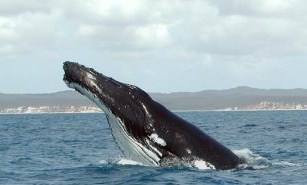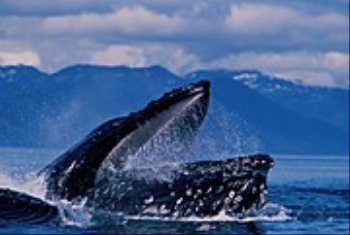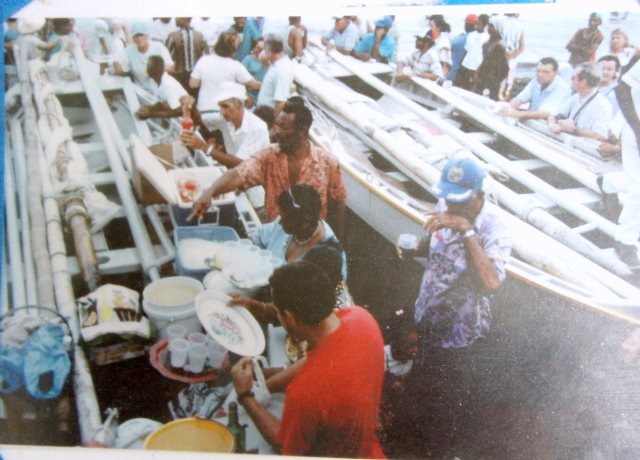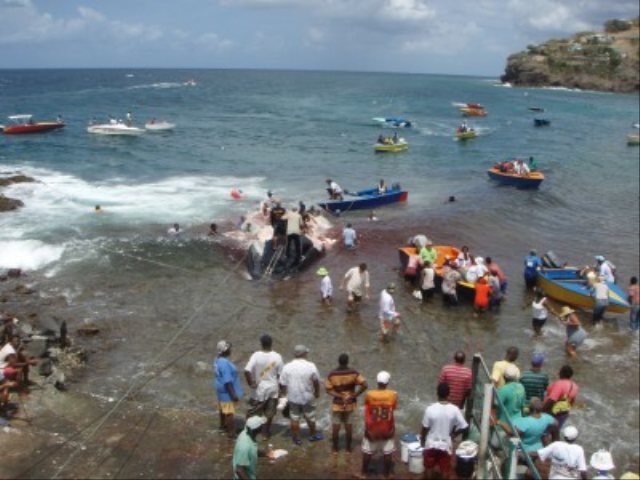Whaling Part One

|
WHALING
Whaling is in the history and is part of today's Bequia and as such we took a look at it. We have never been to a bull fight, never will or to a hunt of any kind, never will. Neither of us are vegans, we wear leather shoes and belts. In this blog I have tried to lay out some facts, a bit of history and whaling in Bequia in an impartial way, difficult but here goes:
1000:
Basques begin
hunting right whales in Bay of Biscay region, the first true commercial whaling
operation. Over the ensuing centuries, they expand slowly northward and
westward, arriving off Labrador around 1540. 1611:
England’s
Muscovy Company sends two whaling ships to the newly-discovered Arctic island of
Spitsbergen to hunt bowhead whales. By 1613:, the waters around Spitsbergen
are choked with whaling ships. By the late
seventeenth century, Dutch whalers alone send roughly 250 vessels and 18,000 men
to the Arctic in search of bowheads. 1675:
Yoriharu Wada
begins organizing whaling crews in Taiji, Japan. 1712:
Beginning of
American commercial whaling, operating out of Nantucket in search of sperm
whales. 1842:
British
explorer James Clark Ross, sailing off the Antarctic Peninsula, observes
“a
very great number of the largest-sized black whales,” prompting interest in
the prospects for
an Antarctic whaling industry. 1863:
Norwegian
whaling pioneer Svend Foyn launches the Spes et Fides, the first truly
steam-powered whaling ship. 1868:
Foyn perfects
the harpoon cannon. 1874:
German whaling
ship, the Grönland, heads south
in search of the whales spied by Ross. It becomes the first steam ship to cross
the Antarctic Circle, but fails to catch any whales. 1904:
Norwegian Carl
Anton Larsen establishes the first Antarctic whaling operation, at Grytviken on
South Georgia. In its first twelve months, the company shoots 184 whales. Within
ten years, South Georgia whalers kill 1,738 blue whales, 4,776 fin whales, and
21,894 humpback whales. 1909:
First British
Antarctic whaling station established on West Falkland
Island. I will go no
further in time as the Japanese and Russian factory ships come into history and
the numbers caught are too awful to consider “interesting” – it is surprising
however there are any whales left to hunt. Greenpeace -
keep up the good work against factory ships.
Whatever our /
your feelings on the matter, the hard fact is the people of Bequia hunt whales.
They are one of the few communities that the International Whaling Commission
recognise as having a legitimate right to hunt under the Aboriginal Subsistence
Scheme. This means that through tradition and a dependency on whale products,
some native people are permitted to kill a certain number of whales per year.
FACT. The number of whales caught in seven years between 1988 and 1994
was four - one in 1988, one in 1992 and two in 1993. We don’t know about the next years but one was caught in 2008, one in
2009, so no huge numbers are involved. About 5,500 humpbacks come through these
waters each year that equates to about half the total number of these
magnificent beasts. At the 39th meeting of the International Whaling Commission in 1987,
the whaling in Bequia was approved as an aboriginal whaling, and a quota of
three humpback whales per year was set for St. Vincent and the Grenadines from
the 1987/88 whaling season. From the 1993/94 whaling season, the quota was
reduced to two whales. International Whaling Commission based in Cambridge England. This version
valid as of the 25th March 2009 Gray
whale Up to 140 per
year may be taken by the Chukotka people of Far East Russia and Makah tribe of
Washington State. USA1 1 Paragraph 13 of the Schedule does not specify which
‘aborigines’ may take the whales from an ASW quota allocated. Thus, the USA and
the Russian Federation have agreed to share the gray and bowhead quota. Russia
takes one bowhead per year. Fin
whale Up to 19 per
year may be taken by the Inuit of Greenland. Minke whale. Up to 12 from the Central
Atlantic stock may be taken per year, plus up to 3 unused strikes from previous
years. Up to 200 from the West Greenland stock may be struck per year plus up to
15 unused strikes from previous years by the Inuit of Greenland.
Bowhead whale
Up to 67 to be
struck per year, plus up to 15 unused strikes from previous years. No more than
280 shall be landed between 2002 and 2007. Up to 2 to be struck per year, plus
up to 2 unused strikes from previous years. Humpback whale Up to 20 ‘for the seasons 2008-2012’ may be taken by Bequians of St Vincent and the Grenadines.
At the start of
each season the local priest comes to bless the boats
and all the islanders join in a party. It is now over a century (1875) since whaling techniques were
introduced to Bequia by the Americans, and whaling is now firmly entrenched as a
cultural activity among the inhabitants of the island. Its economic decline
began around 1910 when the industry employed as many as 100 men.
In the early
days, between 1880 and 1920, there were nine shore-whaling stations throughout
the Grenadines, including six on Bequia, and together they surveyed hundreds of
square miles of ocean. They'd catch perhaps 15 whales in a good year, a
tremendous boon to the local economy. In 1920, twenty percent of the adult male
population of Bequia was employed in the whaling industry. Five years
later all that changed; a Norwegian factory ship set up operation off Grenada
and annihilated the humpback population within a year and a half. Almost no
whales were caught by islanders between 1925 and 1948, and none at all were
caught for eight years after that. The whaling stations folded one by one, and
by the 1950's only the Ollivierre family was left. Today the humpback population
has recovered slightly--the IWC now considers the species "vulnerable" rather
than "endangered" -- but sightings off Bequia are still rare. From 1925 humpback whaling has been limited to Bequia Island only and
the industry did contribute to the economy of the island. Now as in days gone by the whaling season on this island extends from
February when the whales travel southward to the breeding grounds in the waters
between Bequia and Mustique and ends in May when they migrate northwards to
colder waters. There is only a small window of about four months within which to
harvest these animals. There is no wage payment in the industry, but rather a "share system"
is usually adopted. The whale when caught is processed at the landing station in
Petit Nevis, and the meat is distributed among the boat (i.e. boat-owner), the
six crew members and the lookout. In addition, everyone who assists in the
processing at the landing station receives a barrel of whale meat as a
reward. The share of each person may be sold to resident of Bequia on the
spot, excluding the portion reserved for their own consumption, and gifts to
their relatives and friends. Leftover meat is dry salted and sent to extended
relatives and friends. In the past, whale oil was refined from the blubber and exported, but
today no refining is done on a commercial basis. The blubber is distributed in
the same way as whale meat. The distribution of whale meat by this share system and its
redistribution by gifts have enabled whale meat to go around throughout Bequia
(and the neighboring Caribbean islands). This fact plays an important role in
the maintenance and inheritance of the whaling culture in the island and
cementing family bonds. The boat-owner pays all expenses necessary for the maintenance and operation of the whaling business including the costs of the whaling boat, harpoons, hand-lances, ropes and sails. The only exception is the cost of cartridges for bomb-lances which is paid for by all the persons involved. However, in a year where there is no catch a large risk is imposed on the boat-owner who has to pay out of his pocket for all expenses.
When a whale is brought in (row and sail until the catch - motor boat tows in the boat and carcass). "Now days dey 'ave speed boats com meet dem". In the old days rowing in was dangerous - a bottle of rum was shared, then singin' and a pullin' began. The killing of a whale prompts huge celebration, hundreds of islanders gather on Petit Nevis for the event, they shout encouragement to the returning crew. For schoolchildren the learning ends and they get the rest of the day off. "In old time days dey haulen into de noight. W'en we hear fast tow, de woman go n' to de bush to haul woods to share, to boil out blubber. We start dis evening to grind salt wid hand stone to carry de nex' day on de bayside - to wale key". A Bequia whaleman says " W'en de whistlin' wale soun' (dives), you mus' move in de boat like you walkin' on eggs. Dem hearing is sharp, sharp." Indeed acoustic studies suggest that a humpback whale can hear another humpback singing more than fifty miles away. Out of necessity Bequia whalemen have learned to distinguish bulls from cows, as bulls are reportedly more difficult and dangerous to approach. Bequia whalemen characterise "whistlin' wales" as lone male. Scientific studies confirm this belief. Humpback whales make a seasonal migration - some two thousand miles - between their summer feeding grounds off New England and Canada to the tropical waters off the Caribbean in winter. Attracted to the shallow, protected waters of St. Vincent and the Grenadines, humpback whales come here from January to May to mate and have their calves. Born tail first, a newborn calf is about twelve feet in length weighing about 1,500 pounds. The calf nurses from its mothers fat rich milk for about six months gaining an incredible one hundred pounds a day. Bequia whalers describe a pronounced groove in the tongue and lower lip of the young calf. During nursing this groove may act as a funnel to help channel the milk to the calf. Such interesting observations had previously been unnoticed because scientific studies of humpback whales had been confined to their northern feeding grounds where newborn calves were never observed. Scientists had wondered if humpbacks feed in the tropics. Bequia whalemen note that "a May whale has scanty blubber and when you cut she up, there is no food in the stomach". True enough humpbacks do not feed in the tropics. Instead the eight inch overcoat or blubber acts as a food reservoir during their six month fast in tropical waters. By May, their blubber layer is less than two inches thick. Bequians have contributed to the vast pool of natural history data about these whales in their southern habitat. |




